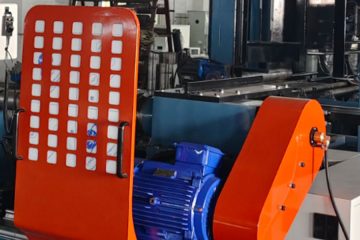OverCut machining vs Undercut Machining?In the realm of manufacturing and machining, precision and accuracy are paramount. Engineers and machinists strive to create intricate components and products with impeccable quality. However, even with advanced technology and skilled craftsmanship, challenges such as overcutting and undercutting can arise, jeopardizing the final product’s integrity. In this article, we delve into the intricate world of overcut and undercut machining, exploring their definitions, causes, implications, prevention strategies, and real-world applications.
Defining Overcut Machining
Overcut machining, a term often heard in cnc machining suppliers, refers to the unintentional removal of material beyond the desired boundaries. This phenomenon can lead to dimensional inaccuracies, surface imperfections, and a diminished quality of the end product. Overcutting can result from various factors, including tool wear, improper tool path programming, excessive feed rates, or inaccurate machine settings. The consequences of overcutting can ripple through the manufacturing process, causing delays, increased waste, and even safety hazards.
Causes and Consequences of Overcut Machining
- Tool Wear: As cutting tools interact with workpieces, they gradually wear down. This wear can lead to tools cutting deeper than intended, resulting in overcutting.
- Improper Programming: Inaccurate toolpath programming can lead to the tool engaging with the material at incorrect depths, causing overcutting.
- Excessive Feed Rates: Rapid feed rates can lead to increased forces acting on the tool, causing it to dig deeper into the material and exceed the desired cutting depth.
- Machine Calibration: Incorrectly calibrated machines might not accurately position the tool, leading to overcutting.
The consequences of overcutting extend beyond the visible surface. Dimensional inaccuracies can lead to parts that do not fit or function as intended. Surface imperfections can affect the part’s aesthetics and structural integrity. In industries such as aerospace and automotive manufacturing, where precision is non-negotiable, overcutting can result in costly rework and potential safety hazards.
Preventing Overcut Machining
- Tool Selection and Maintenance: Choosing appropriate cutting tools and ensuring they are properly maintained can mitigate tool wear-related overcutting.
- Accurate Programming: Utilizing advanced CAM software to program toolpaths with precision can help prevent overcutting caused by programming errors.
- Feed Rate Optimization: Calculating and implementing optimal feed rates reduces the risk of overcutting due to excessive forces.
- Machine Calibration: Regularly calibrating machines ensures accurate tool positioning, minimizing overcutting risks.
Exploring Undercut Machining
Undercut machining, the counterpart to overcutting, involves the unintended removal of material from areas that should remain untouched. This can lead to recessed or uneven features, rendering the final product unfit for its intended purpose. Undercuts can arise from tool deflection,undercut tips, inadequate tool access, or improper toolpath planning. These unintended recesses can lead to compromised geometries and poor part quality.
Causes and Consequences of Undercut Machining
- Tool Deflection: When cutting forces are applied, tools can bend or deflect, causing unintended material removal in adjacent areas.
- Inadequate Tool Access: Limited tool access in complex geometries can lead to tools inadvertently reaching unintended areas.
- Toolpath Planning: Poorly planned toolpaths might not consider the potential for undercutting, leading to undesired recesses.
- Fixture Design: Inadequate fixturing can result in workpiece movement during machining, leading to undercuts.
Undercuts can have severe repercussions, especially in industries where tight tolerances and intricate designs are paramount. Aerospace components, medical implants, and precision molds are examples of products that require flawless geometries. Undercut-related defects can render these products unusable, resulting in wasted resources and compromised performance.
Preventing Undercut Machining
- Tool Deflection Mitigation: Using stiffer tools and reducing cutting forces can minimize tool deflection and subsequent undercuts.
- Accessible Toolpaths: Utilizing multi-axis machining and advanced CAM software can help access complex geometries without unintended material removal.
- Toolpath Simulation: Simulating tool motion before machining can identify potential undercut areas and allow adjustments to be made.
- Fixture Optimization: Well-designed fixtures ensure workpiece stability during machining, minimizing the risk of undercuts due to movement.
Real-World Applications and Case Studies
- Aerospace Manufacturing: In the aerospace industry, overcutting and undercutting can lead to engine components that fail to meet performance specifications. Precision machining of turbine blades demands meticulous attention to avoid these pitfalls.
- Medical Device Production: Producing medical implants with intricate features requires preventing both overcutting and undercutting. Prosthetics and dental implants must align perfectly with the human body, leaving no room for errors.
- Automotive Engineering: The automotive sector relies on precise machining for engine components, ensuring optimal performance and efficiency. Overcutting or undercutting in critical areas can lead to engine malfunction or decreased fuel efficiency.
Conclusion
The intricate dance between machining tools and workpieces demands precision and expertise. Overcut machining and undercut machining, as undesired phenomena, can sabotage even the most well-designed manufacturing processes. Understanding their causes, consequences, and prevention strategies is essential to achieving high-quality components across industries. From aerospace to medical devices and beyond, the battle against overcutting and undercutting is a crucial aspect of modern manufacturing, where excellence is the only acceptable outcome.



0 Comments